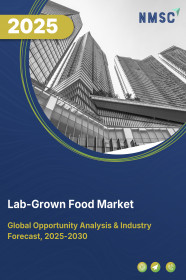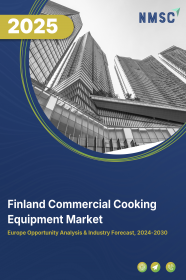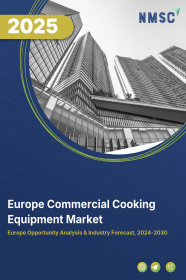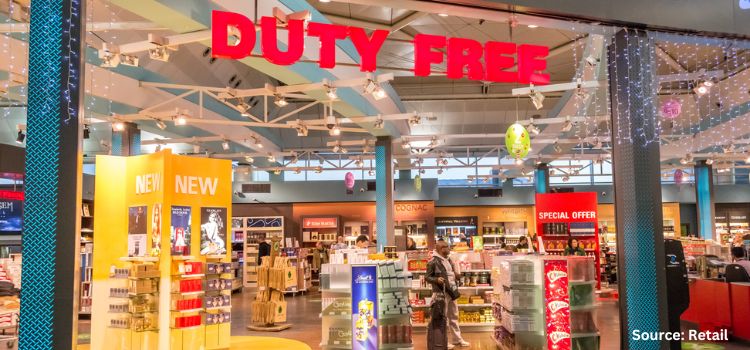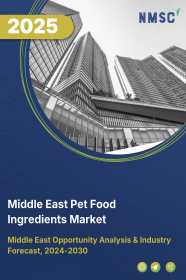
Middle East Pet Food Ingredients Market by Type (Non-Vegan, Vegan, and Novel Proteins), by Nature (Organic and Inorganic), by Form (Dry and Wet), by Pet Type (Dog, Cat, and Others), and by Distribution Channel (Online and Offline) – Opportunity Analysis and Industry Forecast, 2024–2030
Industry: Retail and Consumer | Publish Date: 21-Apr-2025 | No of Pages: 228 | No. of Tables: 182 | No. of Figures: 147 | Format: PDF | Report Code : RC2848
US Tariff Impact on Middle East Pet Food Ingredients Market
Trump Tariffs Are Reshaping Global Business
Middle East Pet Food Ingredients Market Overview
The Middle East Pet Food Ingredients Market size was valued at USD 929.7 million in 2023, and is predicted to reach USD 1652.6 million by 2030, at a CAGR of 8.1% from 2024 to 2030. In terms of volume the market size was 177.22 kilotons in 2023 and is projected to reach 257.19 kilotons in 2030, with a CAGR of 5.1% from 2024 to 2030.
The pet food ingredients market refers to the creation and supply of essential raw materials used in making pet foods that addresses to the diverse nutritional requirements of various species. These ingredients ranging from proteins, carbohydrates, and fats to vitamins and minerals are derived from both plant and animal sources and undergo processing methods such as grinding and blending to improve their flavor and nutrient content.
The use of high-quality ingredients is essential for promoting pet health and facilitating growth as they deliver the necessary nutrients for pets with specific dietary needs. The companies in the sector emphasize sourcing premium ingredients and maintaining transparency across their supply chains, enhancing both product quality and consumer trust. This approach plays an important role in advancing the market, as consumers increasingly seek superior pet food choices.
Rising Urbanization Drives Middle East’s Pet Food Ingredients Market
Growing urbanization in the Middle East that includes nations such as the United Arab Emirates and Saudi Arabia, supports the pet food ingredients market as more people move to urban areas, pet ownership rates increase that drives demand for a variety of high-quality pet food products.
This shift encourages manufacturers to source a wider selection of premium ingredients that address the unique dietary needs of urban pets. According to the Central Intelligence Agency (CIA), in 2023, approximately 85% of Saudi Arabia's total population resided in urban areas. As urban pet ownership continues to climb, the need for specialized and nutritious pet food ingredients is expected to rise, contributing to market growth.
Expansion in Disposable Income Fuels the Pet Food Ingredients Market
The increasing disposable income in Middle East propels the growth of the pet food ingredients market, enabling pet owners to invest more in high-quality, premium pet food that fulfills their pets' nutritional needs. This trend encourages manufacturers to introduce specialized formulations, catering to specific dietary requirements and preferences, and further elevating the demand for diverse, premium ingredients in the region's pet food sector.
Consequently, manufacturers broaden their offerings of high-quality, specialized pet food products to address to the evolving consumer preferences.
The Scarcity of Ingredients Restraints Middle East’s Pet Food Ingredients Market Growth
The restricted access to essential resources such as premium meat and organic ingredients restraints the growth of the pet food ingredient market. The challenges in acquiring top-quality ingredients such as premium proteins, grains, and other nutrients, coupled with the unpredictability of agricultural yields that are influenced by climate conditions, market fluctuations, or seasonal variations.
These factors severely limit manufacturers' capacity to scale their operations and meet the increasing demand for high-quality pet food ingredients, thereby slowing down overall market growth.
Adoption of Sustainable Protein Sources Creates Growth Opportunity for the Market
The adoption of sustainable protein sources such as egg-derived proteins, tofu byproducts, black soldier flies, and silkworms is expected to create new opportunities in the pet food ingredient market. These alternatives are gaining recognition for their rich nutritional content and lower environmental footprint compared to traditional proteins including beef and pork.
Egg and tofu byproducts deliver essential nutrients and supports food waste reduction, while insect proteins from black soldier flies and silkworms offer an efficient and eco-conscious approach to protein production. These sustainable choices not only fulfill the nutritional requirements of pets but also encourage the adoption of organic practices, encouraging the industry toward environmentally responsible production and long-term sustainability.
Competitive Landscape
The several market players operating in the Middle East pet food ingredients market include Cargill Incorporated, BASF SE, Archer Daniels Midland Company (ADM), Koninklijke DSM N.V., Kemin Industries Inc., Symrise AG, Darling Ingredients Inc., Cagatay Pet Food, Leo Group Ltd., KROHNE Ltd., and others.
Middle East Pet Food Ingredients Market Key Segments
By Type
-
Non-Vegan
-
Beef
-
Chicken
-
Fish
-
Others
-
-
Vegan
-
Soyabeans
-
Peas
-
Lentils
-
Others
-
-
Novel Proteins
By Nature
-
Organic
-
Inorganic
By Form
-
Dry
-
Wet
By Pet Type
-
Dog
-
Cat
-
Others
By Distribution Channel
-
Online
-
Offline
By Region
-
Middle East
-
Saudi Arabia
-
United Arab Emirates (UAE)
-
Israel
-
Qatar
-
Kuwait
-
Oman
-
Other Countries
-
Key Players
-
Cargill Incorporated
-
BASF SE
-
Archer Daniels Midland Company (ADM)
-
Koninklijke DSM N.V.
-
Kemin Industries Inc.
-
Symrise AG
-
Darling Ingredients Inc.
-
Cagatay Pet Food
-
Leo Group Ltd.
-
KROHNE Ltd.
REPORT SCOPE AND SEGMENTATION:
|
Parameters |
Details |
|
Market Size in 2023 |
USD 929.7 Million |
|
Revenue Forecast in 2030 |
USD 1652.6 Million |
|
Growth Rate |
CAGR of 8.1% from 2024 to 2030 |
|
Market Volume in 2023 |
177.22 Kilotons |
|
Volume Forecast in 2030 |
257.19 Kilotons |
|
Growth Rate (Volume) |
CAGR of 5.1% from 2024 to 2030 |
|
Analysis Period |
2023–2030 |
|
Base Year Considered |
2024 |
|
Forecast Period |
2024–2030 |
|
Market Size Estimation |
Million (USD) |
|
Growth Factors |
|
|
Companies Profiled |
10 |
|
Market Share |
Available for 10 companies |
|
Customization Scope |
Free customization (equivalent up to 80 working hours of analysts) after purchase. Addition or alteration to country, regional, and segment scope. |
|
Pricing and Purchase Options |
Avail customized purchase options to meet your exact research needs. |

















 Speak to Our Analyst
Speak to Our Analyst



